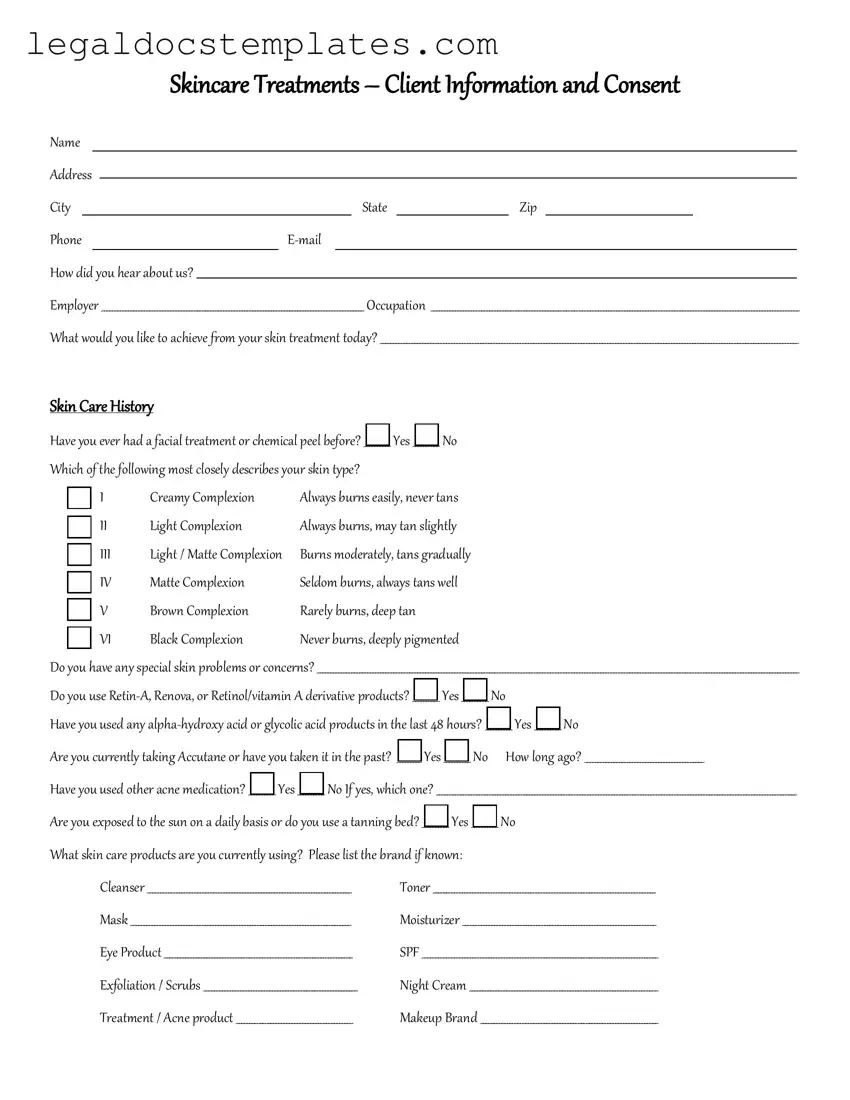The Facial Consent form is closely related to a Medical Consent form, which is used in various healthcare settings. Similar to the Facial Consent form, a Medical Consent form is a document that patients sign to give their permission for medical procedures, treatments, or other healthcare services. Both forms document the individual's understanding of the risks, benefits, and alternatives of the proposed service, ensuring informed consent is legally obtained before any action is taken.
Another document similar to the Facial Consent form is the Photo Release Consent form. This type of form is used to obtain permission from individuals to use their photographs for various purposes. Like the Facial Consent form, it protects the rights of the individual, ensuring that their image cannot be used without their explicit consent, thereby providing a legal safeguard against unauthorized use.
Similarly, the HIPAA Authorization form shares common objectives with the Facial Consent form. The Health Insurance Portability and Accountability Act (HIPAA) Authorization form is a document that allows an individual’s health information to be used or disclosed to a third party. Both forms require clear, informed consent from the individual, emphasizing the protection of personal information and compliance with privacy laws.
A Data Protection Consent form, often used in the context of privacy and data collection, also bears resemblance to the Facial Consent form. This form is designed to obtain an individual's consent for the collection, use, and storage of their personal data. Both documents play a crucial role in upholding an individual’s privacy rights and ensuring transparency between the parties involved.
The Clinical Trial Consent form is another document that aligns with the principles of the Facial Consent form. Used in research settings, this form details the nature of the trial, potential risks, benefits, and the voluntary nature of participation. Just like the Facial Consent form, it is pivotal in ensuring that participants are fully informed and agree to the terms under which the clinical trial is conducted.
Similarly, the Informed Consent form for Surgery is akin to the Facial Consent form. Before undergoing any surgical procedure, patients are required to sign an Informed Consent form for Surgery, which like the Facial Consent form, details the risks, benefits, alternatives, and potential outcomes of the surgery. It's a critical step in the pre-surgical process, ensuring patients understand the significant aspects of the procedure they are about to undertake.
Lastly, the Telehealth Services Consent form shares similarities with the Facial Consent form. With the rise of telehealth services, this form secures a patient's agreement to receive health care services via telecommunication technologies. Like the Facial Consent form, it informs patients about what to expect, the potential benefits and limitations, and seeks their agreement before proceeding, thereby embracing the importance of informed consent in the digital age.


